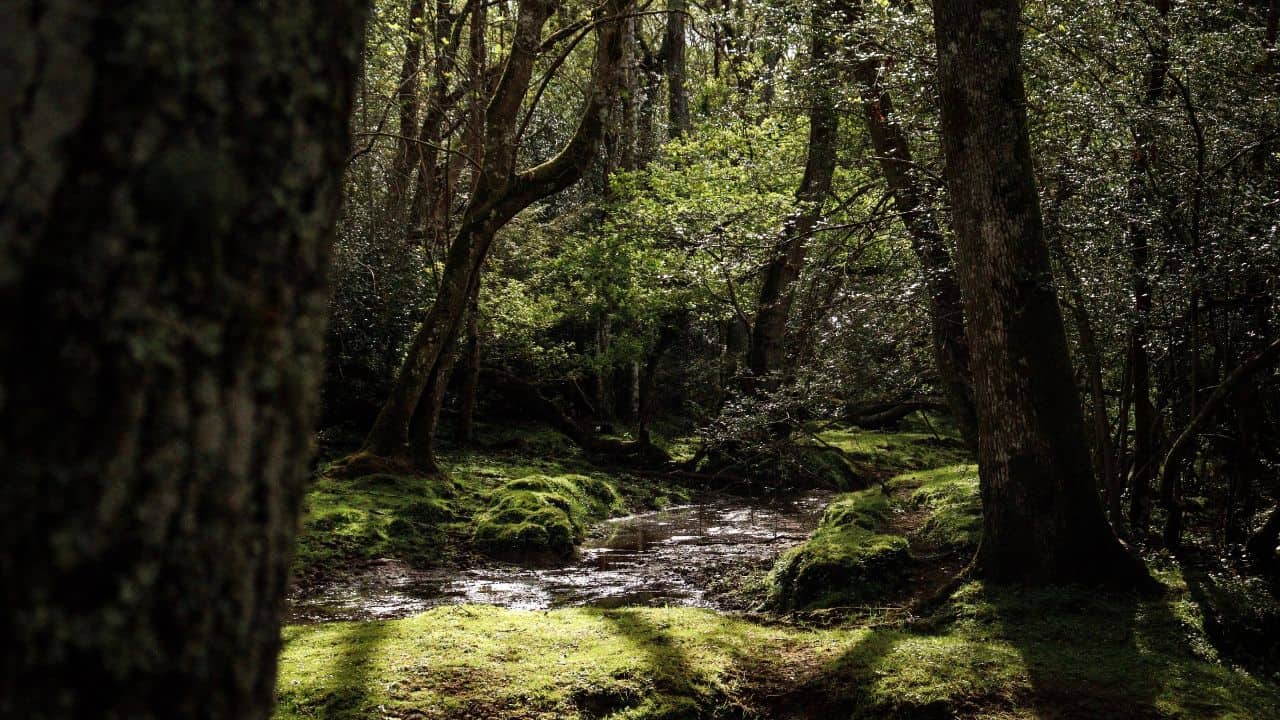Wild camping in the New Forest National Park, one of England’s most cherished treasures, beautifully situated in the countryside yet close to cities like Bournemouth and Southampton, offers a unique experience. Brimming with scenic walking trails and incredible wildlife – including the iconic native New Forest ponies – this place stands as one of the country’s best destinations for relaxation and rejuvenation.
Embarking on an adventure in New Forest’s natural beauty is best experienced through the enchantment of wild camping. Get ready to unlock the secrets of this breathtaking National Park as we unveil its most scenic tent-pitching spots! From hidden gems to picturesque landscapes, here’s everything you need to know to make your wild camping journey an unforgettable one.
Is Wild Camping Legal in New Forest?
Unfortunately, wild camping in the New Forest National Park without the landowner’s permission is not allowed. That said, many people still do it – after all, it’s one of England’s most beautiful regions, and the allure of its stunning scenery is hard to resist.
If you find a secluded spot – i.e., deep in the woods and off the beaten paths – pitch late, stay quiet, depart early, and leave no trace, people will likely look the other way or not notice you at all.
Best Wild Camping Spots in New Forest
Furzey Lodge
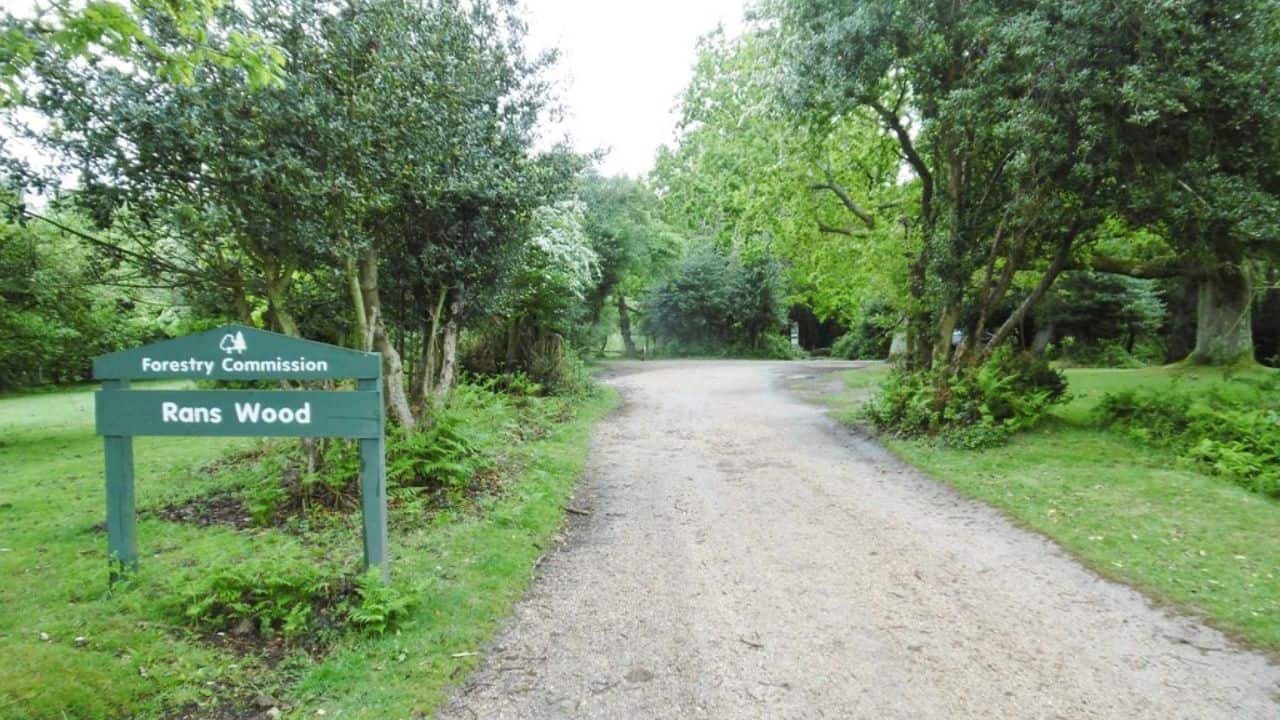
The first on my list of the best wild camping spots in the New Forest National Park is about a mile northwest of the small settlement of Furzey Lodge. It’s a tiny pond in the middle of a not-so-dense section of the forest. While camping here brings a higher risk of being seen, you should be fine if you pitch late, depart early, and leave no trace.
The easiest way to reach this spot is by following the forest road going northwest out of Furzey Lodge. The road is clear of trees for the most part but stops being so about halfway to the camping spot, at which point you’ll enter the actual forest. From there, keep walking in the same direction, and you’ll reach the place in a few minutes.
The water in the pond is not drinkable – bring clean water and everything else you usually pack for your wild camping trips. Making a campfire here is out of the question. If you’re planning to prepare a meal, bring a portable cooker. You’ll also want to pack a trowel – here, you’ll be at least a mile from the nearest loo.
You won’t find any pubs and shops in Furzey Lodge. To stock up on supplies (or have a pint!) before heading into the forest, you’ll want to visit the East Boldre village just south of Furzey Lodge. The last thing worth mentioning is the bus station at Furzey Lane Junction – getting here from Southampton or Bournemouth shouldn’t be a problem.
Newton
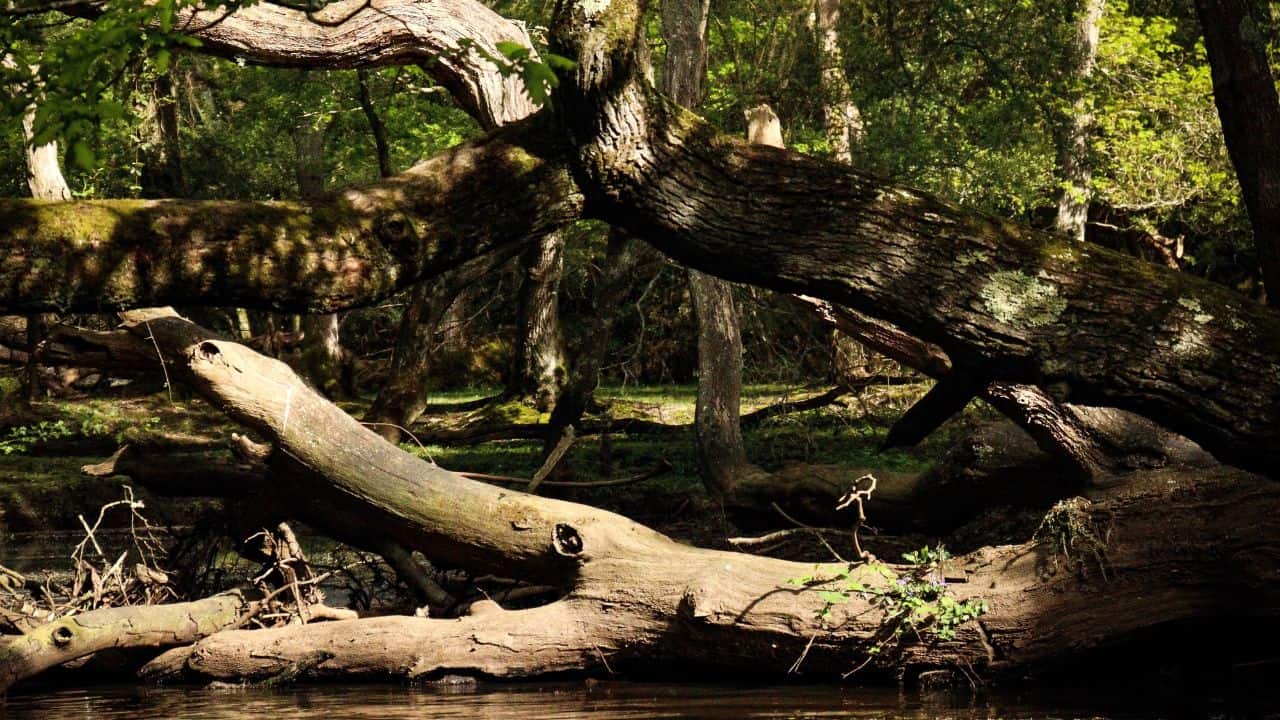
The next spot is for those wishing to wild camp in New Forest in a campervan. It’s a road layby located just outside the forest, near the small settlement of Newton. Here, you’ll be at the entrance to the National Park – it’s a great starting point for outdoor enthusiasts planning to explore this magnificent woodland on wheels.
The layby is a particularly good option for motorhome campers arriving in New Forest from the north, i.e., Salisbury and other cities. As you drive southwards via A36, you’ll notice the layby on your right side immediately after passing Newton. The place is spacious and can accommodate many vehicles at once. There’s even a convenient signpost with a map of the area.
It takes only a 20-minute drive from here to reach Lyndhurst, the village at the heart of New Forest. However, you should first check the Langley Wood National Nature Reserve to the right of A36 immediately after the layby when heading south. You can park your vehicle at the car park situated at the reserve’s southern entrance and explore this ancient broadleaved woodland by following its marked footpaths.
The layby mentioned above is close to Whiteparish, a vibrant community and one of England’s best-kept villages. Besides the 12th-century All Saints Church, check out the village’s pubs like the King’s Head and the Parish Lantern. You can stock up on supplies in the shops before heading south into the National Park.
If, however, you’re open to exploring other parts of England, why not consider the serene beauty of Norfolk? This region offers similar opportunities for wild camping, with its diverse landscapes, picturesque beaches, and quintessential English villages providing a different, yet equally engaging, adventure. Given its expansive coastlines, it also offers unique opportunities for wild camping by the sea, a perfect detour for campervan enthusiasts who’ve enjoyed the enchanting forested landscapes of New Forest.
Bolderwood
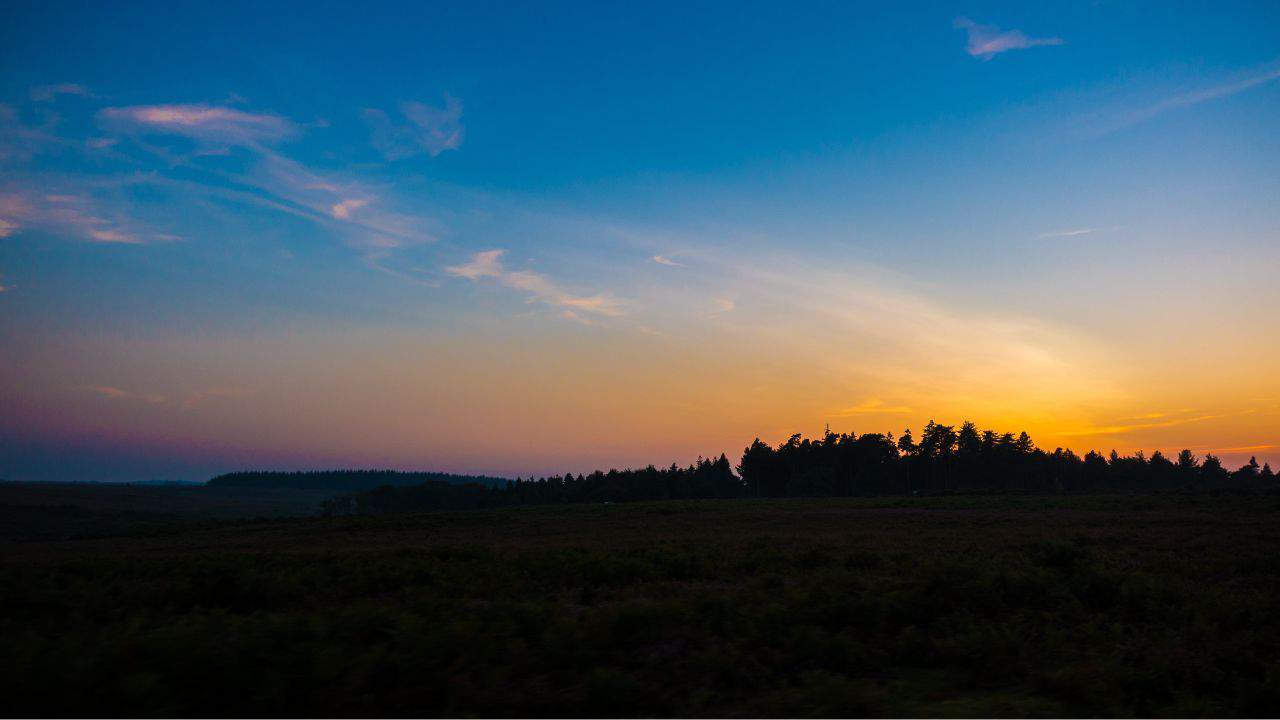
Situated in the central-western part of New Forest, Bolderwood is one of the best places in England where you can see deer in their natural habitat. It is also one of the forest’s most atmospheric areas and, as such, an excellent wild camping destination. However, when searching for a suitable place to set up camp, it’s essential to stay away from roads and footpaths – this section of the forest is well-frequented by the park rangers.
Getting to this part of the park is easy. From Lyndhurst, you only need to keep driving west via Swan Road until you reach New Forest Inn, where you must take a left and follow the road deep into the woods. Bolderwood is about three miles down the road. Once there, you can leave your vehicle at the car park (which also features public toilets).
As mentioned above, you’ll want to pitch your tent as far away from all pathways as possible – try going further south into the forest. In this part of the park, you’re almost guaranteed to encounter various species of deer: Muntjac, Sika, Red, Roe, and Fallow deer. Of these, Red deer are particularly magnificent – at 1.2 metres tall, they’re the largest wild animals on the island. You may also come across hedgehogs, polecats, owls, and other wildlife.
The main attraction in this part of New Forest is undoubtedly Bolderwood Deer Sanctuary, where the deer gather to be fed by the rangers. This is England’s best deer observation spot because of its sizeable wooden platform overlooking a meadow. The sanctuary is next to the car park with a large grassy field where visitors often play games like football, cricket, and rounders.
Bartley Water
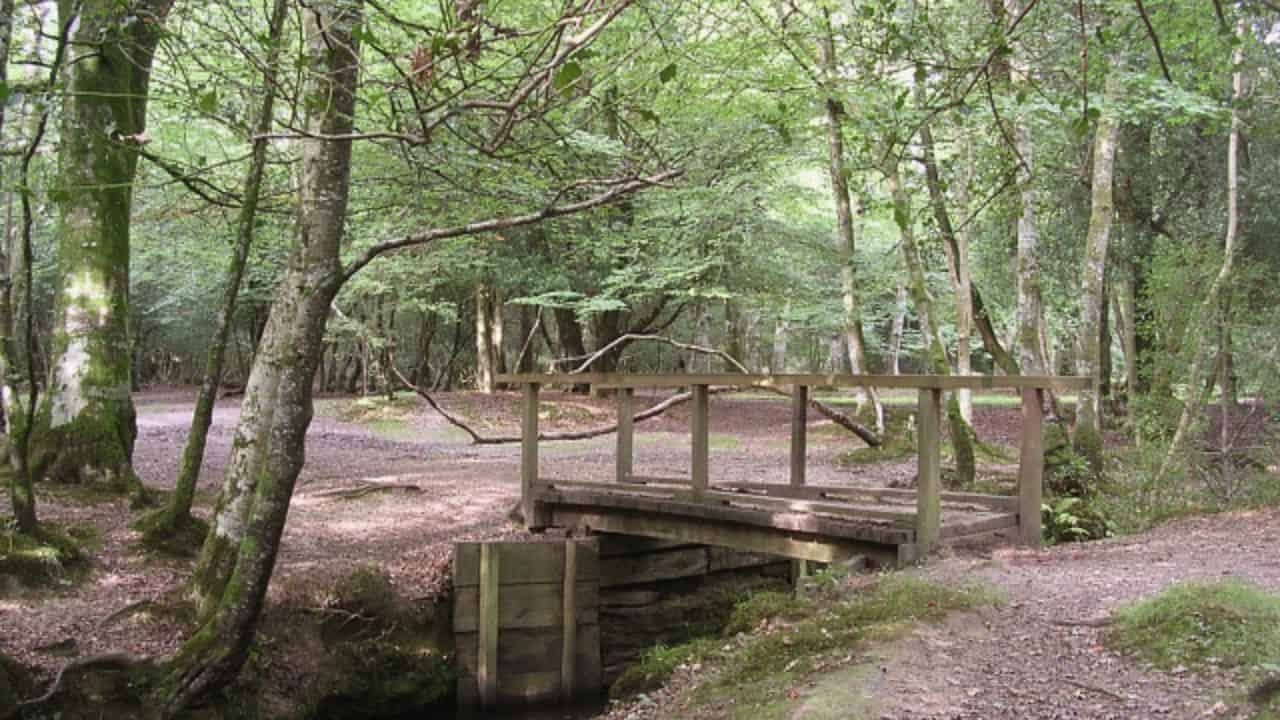
Bartley Water is a creek flowing in the west-east direction from deep down in the woods all the way to Southampton Water. There are many excellent wild camping spots are next to it.
Bartley Water can be reached from any direction. When searching for a suitable creekside wild camping spot, you’ll want to follow the creek upstream, i.e. deeper into the forest and as far away from the nearby village of Ashurst as possible. A good starting point is a wooden bridge marked on the map – from there, head west while following the creek until you find a secluded spot where you can pitch your tent.
Please refrain from drinking the water from the creek. Moreover, when “answering the call of nature”, do it as far away from the brook as possible and bury the waste with a trowel. And, as in the case of wild camping anywhere else in England, make sure to pitch late, leave early, and take away all of your litter.
One of the best things about wild camping along Bartley Water – besides the serene atmosphere provided by the creek flowing through a lush forest – is that you’ll always be close to civilisation. The spot marked on the map is halfway between Ashurst and Lyndhurst, so stocking up on supplies is never an issue. As for the attractions in the area, check out New Forest Wildlife Park (just south of Ashurst), where you can observe animals ranging from harvest mice to grey wolves.
Linford Brook
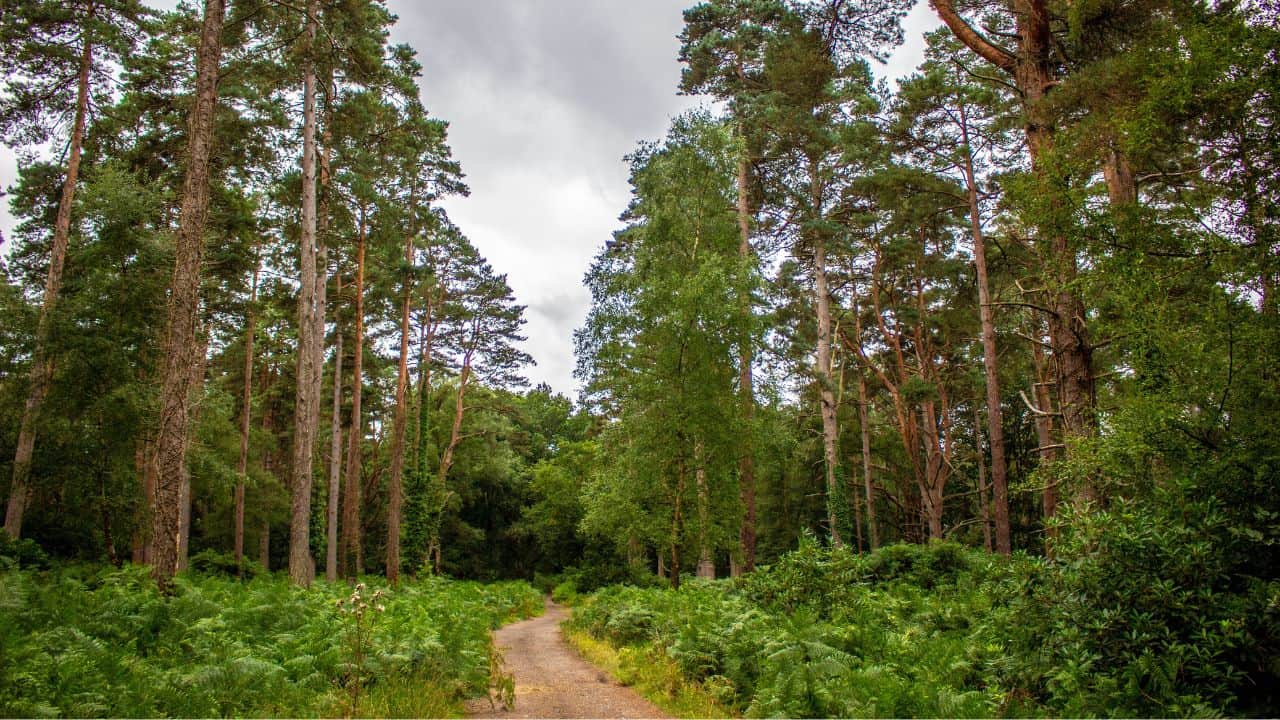
Here we have a wild camping area similar to the one described above – yet another of the National Park’s narrow but idyllic creeks. Linford Brook flows through a section of New Forest that is separated from its main body by a flatland but which is just as enchanting and exploration-worthy. Moreover, this part of the park is the easiest one to reach for those arriving from Bournemouth.
If you’re coming from the east, you only have to follow the road west-northwest of Lyndhurst. Once you pass Millyford Bridge Inclosure, Bolderwood (described above), and the Canadian War Memorial, the road will take you northwest underneath A31 and then west to Linwood. There, you can park your vehicle at Appleslade Inclosure Car Park.
The best starting point for your search for a suitable wild camping spot is the wooden bridge marked on the map. From there, you can follow the brook northwards into the forest and try to find a flat and secluded creekside spot where you can pitch your tent. As in the case of other wild camping spots described in this article, you mustn’t draw attention to yourself in any way and stay as far away from footpaths as possible.
One of the best places in the area to have a pint is the High Corner Inn in the nearby hamlet of Linwood. You also will be close to the nearest Mcdonald’s, which can be found just south of the woodland at a spot where A31 enters the town of Ringwood. You can also stock up on supplies in the same town and check out its Wednesday street market, which has been held in the same place since the 13th century.
If you find yourself drawn to the charm of northern England, consider exploring the wild camping spots in Yorkshire. Much like New Forest, Yorkshire offers an enchanting array of landscapes with its rolling moors, rugged coastline, and idyllic dales providing a unique wild camping experience. Moreover, with its rich history and lively market towns, a camping journey through Yorkshire could offer you the perfect blend of nature and culture after your adventure through New Forest and the historic markets of Ringwood.
Warwickslade Cutting
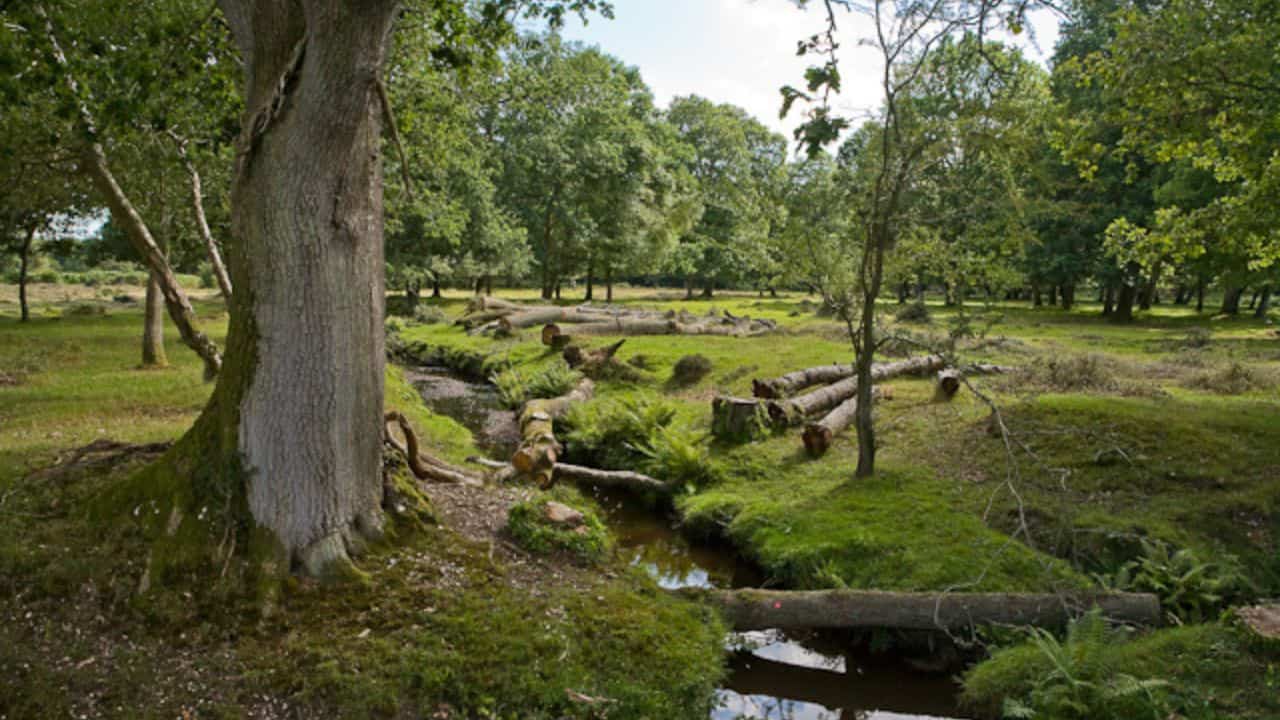
Another scenic wild camping destination in New Forest is Warwickslade Cutting. Once a temporarily built railway, Warwickslade Cutting is now one of the park’s most beautiful woodland creeks, meandering through the forest’s central-western part. A vast diversity of insects and flora call this peaceful stream home – it is, without a doubt, one of the most idyllic places in the park where you can pitch your tent.
A large section of the creek flows through clearings. Obviously, you’ll want to find a creekside spot inside the forest – search for one at the stream’s northwestern end, deep in the woods. This part of the park is well-frequented by the rangers, so staying secluded and off the beaten tracks is paramount.
Two of the area’s points of interest worth checking out are New Forest Reptile Centre and Knightwood Oak. The former is north of the creek (accessible via A35) and is one of the best places to observe smooth snakes and sand lizards up close. Knightwood Oak is a 500-year-old tree just south of the stream. It’s the park’s largest oak and an excellent place to stop and enjoy a picnic.
This part of the park is somewhat remote, with the closest settlement being the “unofficial capital” of the New Forest – Lyndhurst – two and a half miles to the east. So, if you’re planning to wild camp at Warwickslade Cutting, make sure to first stock up on supplies in the village. While there, visit the New Forest Heritage Centre to learn more about the National Park and its history.
Highland Water
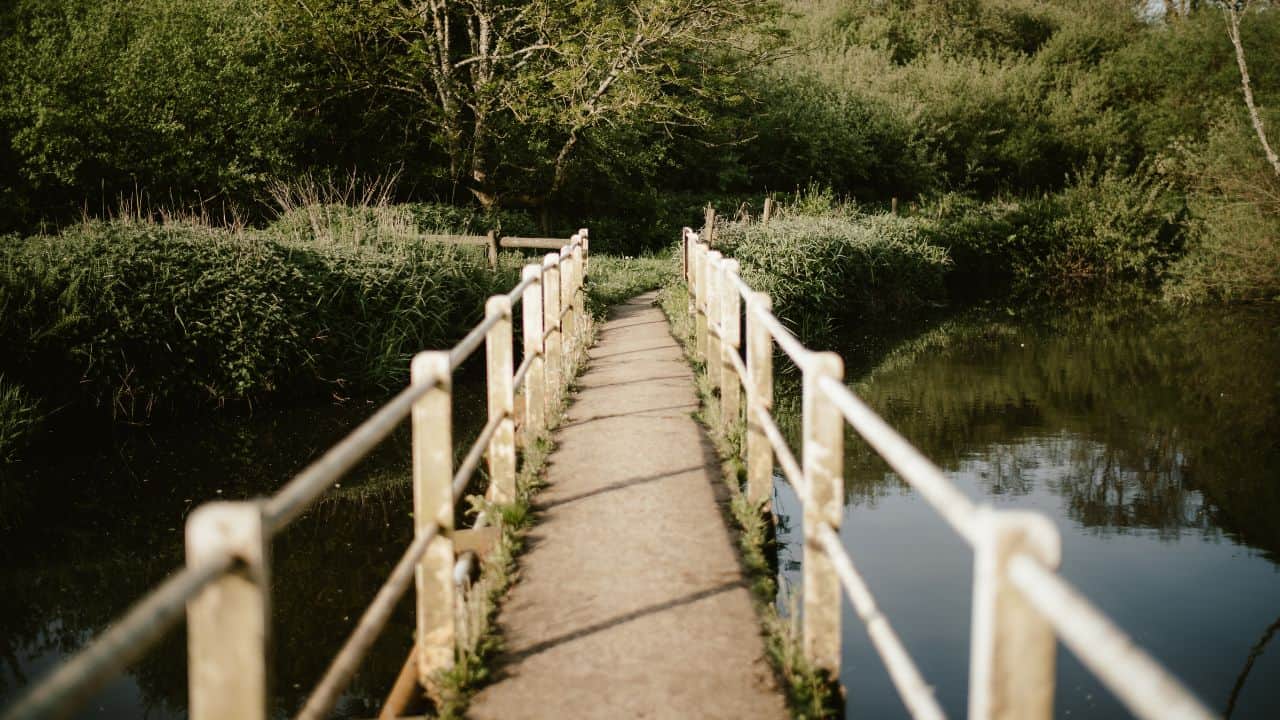
Highland Water is the last on my list of the best New Forest wild camping spots. Situated east of Bolderwood, this is an ancient conifer and deciduous woodland featuring a creek of the same name. The stream runs through the forest in the north-south direction and eventually flows into the Lymington River, which, in turn, flows into the English Channel.
Like most of the park’s creeks, Highland Water is narrow, slow-flowing, and surrounded by tall trees on both sides – an ideal place for tent-pitching. The only problem here is that this part of the National Park is interspersed with roads, so you’ll have to be extremely cautious when searching for a suitable spot to set up camp. Try to find one north of Winsor Lane, deep in the woods.
On the bright side, you’ll have plenty of footpaths everywhere around. Once you’re done with camping, you can easily explore one of New Forest’s most beautiful parts on foot. One good idea is to follow Highland Water south all the way to Millyford Bridge Inclosure, from where you can proceed east, south, or west to other wild camping spots described in the guide.
The best places to visit in the area are the ones I’ve already discussed, like the New Forest Reptile Centre and Bolderwood Deer Sanctuary. Moreover, another creek close to Highland Water that you can check out is Bagshot Gutter. It’s less than a mile to the east and has plenty of excellent wild camping spots on both banks.
Where to Next?
As your adventure concludes, the whispers of the New Forest may still linger in your ears, resonating with the unforgettable memories made in this breathtaking National Park. We’ve traversed hidden ponds, serene brooks, ancient woodlands, and enchanting wildlife habitats, demonstrating the magic that wild camping in the New Forest has to offer.
While this woodland retreat is truly one-of-a-kind, the appeal of the wild doesn’t stop at the borders of the New Forest. In fact, it extends beyond, leading you to new terrains and unexplored locales, kindling the adventurer’s spirit within you.
Now, you might be wondering, where does the compass point next?
Well, how about journeying north? Beyond the cityscapes and rolling hills, beyond familiar boundaries, lies an untouched landscape, a region that could very well be the next chapter of your wild camping story – the rugged, wild beauty of Northumberland. It’s an alternative that holds its own unique charm, one that would certainly provide a refreshing contrast to the experiences you’ve just encountered in the New Forest.

I love hiking, backpacking, and camping. From the Camino de Santiago to the West Highland Way in Scotland or simply a great day hike on the weekend. Hiking refreshes me, my mind, and keeps my body reasonably fit. So far I have walked three Camino routes and many other long distance hikes in the UK, Canada, and around the rest of Europe. One of the best was my hike up Ben Nevis.

